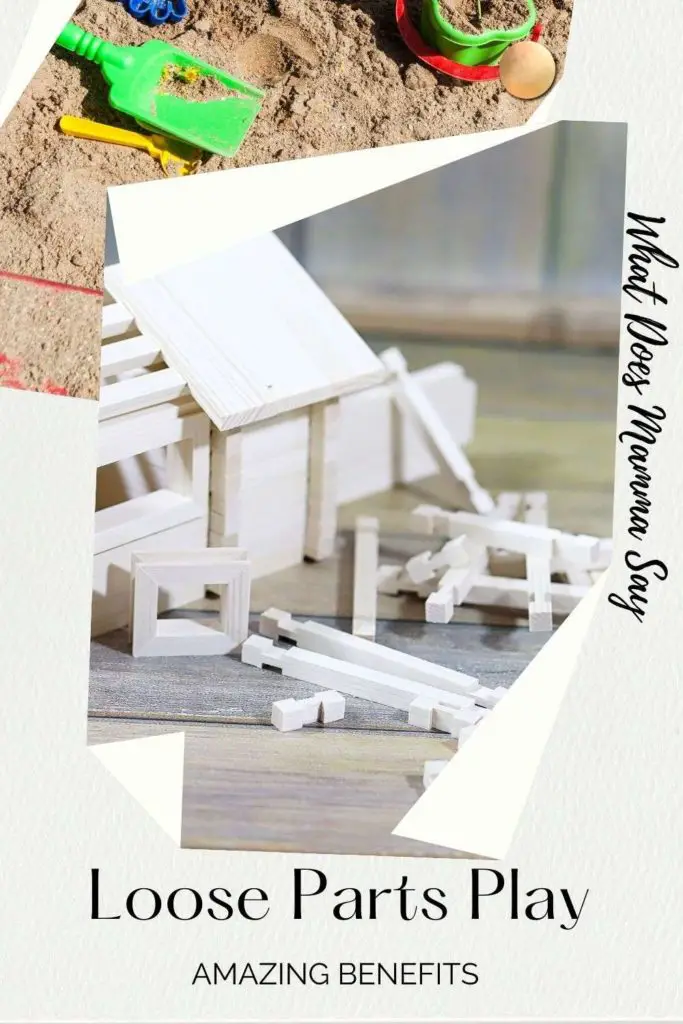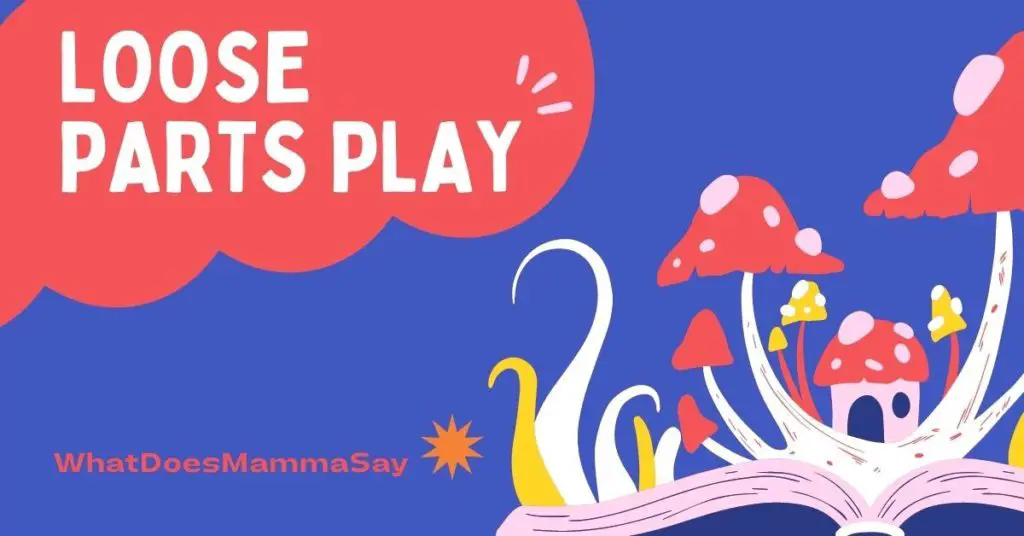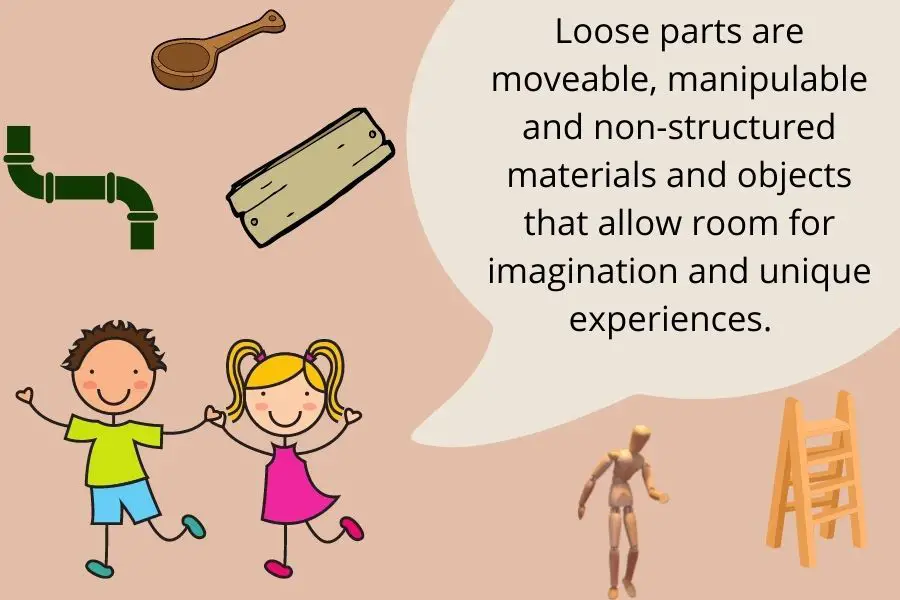If you are a fan of toys that children actually play with DAILY, then you will love loose parts.
In this article you will find out what loose parts play is, but you will also find out WHY loose parts play is helpful and great examples of loose parts play environments.
What is loose parts play?
When engaged in unstructured play with loose parts, research showed that children showed a wide range of positive social behaviours, complex verbal and non-verbal behaviours and various types of risk taking.
Loose parts play has three main characteristics:
-it involves open ended toys and materials
-loose parts need to be moveable, manipulable and nondictated
-loose parts play has limited rules or guidelines
When playing with loose parts, children’s curiosity is triggered and they are able to have uniques experiences. Loose parts also give children the freedom to develop their play based on their own ideas and goals, rather than being predetermined by toys or the environment.
What do I mean by that?
When surrounded by a wide variety of predetermined toys: pink castles with knights and princesses, lego trains with numbers, cars and garages, children’s play will not have the same depth and quality as when playing with loose parts. They immediately understand and follow the use and purpose of the toys, leaving little room for creativity and for unique play episodes.
When talking about loose parts play, we definitely talk about open ended toys play. Simply because open ended play implies playing with no toys or playing with versatile, unstructured toys and loose parts.

Loose parts are starting to become a hip thing, with more and more parents opting for open ended toys. However, they have always been the main objects to be used in play. Think about it, in prehistoric times children could only use tools, stones, sticks, leaves, plants etc to feed into their play. Much like what we are trying to return to today, in a modern world of plastic toys.
If you want to focus on offering children more opportunities for creative and independent play, you need to decide first on what type of loose parts play you think he/she enjoys. And choose both indoor and outdoor open ended toys and materials.
If your child is very creative, maybe focus on gathering plenty of arts and crafts loose parts, design and art, drama etc.
However, if your child is more inclined to engage in pretend play, perhaps you need to create a collection of varied loose parts that encourage dress up, elements to practice conversations/storytelling etc.
No matter what you choose, start from your child’s needs and preferences. And focus on quality, rather than quantity. Too many toys might prevent creative play as well.
Children will create their play episode based on their curiosity, lived experiences, creativity and new ideas.
Which are the benefits of loose parts play?
Anything that offers opportunities for unstructured child-led play are considered great loose parts for play. Nicholson (1972) was the first to propose the theory of loose parts. He believed that:
“In an environment, both the degree of inventiveness and creativity, and the possibility of discovery, are directly proportioned to the number and kind of variables in it”
Nicholson, 1972:6
Apparently, research found that when children need to engage in unstructured play they require more sophisticated skills than they would require in a structured school context for example.
So, it is quite important that children practice such skills. And the perfect way to do it is by engaging in unstructured play. Loose parts play is a great option for various reasons.

Firstly, loose parts play or LLP allows children space and freedom to create their own playful episodes and explore the world on their own terms.
Moreover, it motivates children to constantly make decisions and thus becoming more confident. Thus children become empowered learners that manage to succeed in schools and life.
Also, child-led play will aid self-regulation which has been researched to help improve overall academic achievement.
In a nutshell, loose parts play helps social and emotional, as well as cognitive development. What is more, studies showed that children do not show stereotypical exclusion behaviours based on gender or age while engaged in loose parts play.
You can read much more about loose parts play and its benefits in this Journal of Childhood Studies.
How to encourage great play
It is up to us, the adults around children, to offer high-quality opportunities for children to engage in unstructured play. One of these opportunities is for us, the adults, to offer less intervention and supervision.
Sounds very hard, and it is even harder to refrain ourselves from settling a conflict or negotiating for our children while engaged in an interaction. However, it is good practice to remind ourselves: nothing wrong will happen if I let him/her do it! It is even BETTER if I stand back and watch, he/she is great and can manage this!
Intervene only when you sense that your child is at risk!

Another important aspect to consider in loose parts play is the play environment. Research found that what adults consider to be or assume to be great for children in terms of toys/playing equipment is not also valued by children.
For example, playground markings (spots on the floor) had no effect on children’s play behaviour. However, something adults would only consider only incidentally (drain covers) became a focal point of play in one situation.
Fixed play equipment also proved to be less engaging for children when compared to loose parts play.
Loose parts play includes moveable materials and equipment that allows children the freedom to engage with as they wish, with little or no adult supervision.
Starting from this premise, we can design a play environment that optimises creativity and engagement.
Many school settings, mostly nurseries, create such spaces that allow children to use materials independently and enhance their creativity, resourcefulness and cooperation.
Examples of amazing play environments
You can find great examples of how to set up an open-ended play environment from ABC Does, run by Alistar Bryce-Clegg, an experienced consultant and early years practitioner.
The Curiosity Approach is another fantastic example of how loose parts play can be used to design a playful environment that is child-led.
Early Impact Learning might also offer great ideas for play and other resources as they are focused on early years education.
But anyone can create amazing loose parts play environments. And I mean ANYONE. If I could do it, (I lack any practical skills whatsoever), you can too!
Simply focus on finding materials and elements that can encourage a young child to explore, invent and move around/combine. In doing so, you will encourage children-led learning as well, which studies showed to be one of the key characteristics in effective learning.
Final thoughts
Try to imagine a child who was offered limitless possibilities to reinvent the world around him. Imagine this child as an adult now. He might be the one able to reshape all the world around us, rethink how we live and find brilliant new ways of doing things.
But it all starts early on, in their first years of life. By offering children loose parts and by allowing them to engage in free, unstructured and nondictatedplay, children explore the world in unique, personal and creative ways.

Hi. I am Monica, an experienced ESL teacher and early years student, mother to a preschooler and passionate reader.

Thanks so much for sharing the information about loose parts. I find my toddler’s favorite loose part play is are imaginative playdoh kits with lots of random trinkets and items included. She could play forever with them and we’ve found some awesome ones on Etsy!
This is a great article! I love to incorporate loose parts play in my preschool classroom as well as with my toddler at home!
I am always fascinated to see the loose parts play at my son’s daycare and the creative ways the kids come up with to play using their imaginations. I must do more at home!